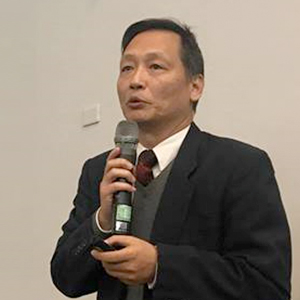Novel (new) ingredient employed in the Greater China. – especially for Taiwan and Mainland China
You always excited about some botanical compounds found to be effective on certain functions, like Resveratrol, Astaxanthin, Xeniji, Curcumin, Moringa, Quinoa etc. Each one got attractive commercial opportunity for the future. Some agricultural products can be treated as conventional foods while the extracts of them will usually treated as novel/new food ingredients.
To be competitive on the market, if you can not be the first one then you should at least be the best one. This rule for the raw materials industry for either functional foods or functional cosmetics is in a dilemma situation. Why is that ?
If you want to be the first one, then you will need to fight with all governmental agencies since this means your ingredient is novel/new to the target market. If your ingredient is recognized as a novel one, then you usually need to get approval/permit for it, like new dietary ingredient (NDI) for US, novel food for EU, non-traditional food edible ingredient list for Taiwan and new food ingredient(NFI) for Mainland China as examples. This means that you need to spend money on all different safety tests, stability tests, and quality tests etc. Fortunately, we do have enough experience on the applications of NTFEI for Taiwan FDAand NFI for SAMR/CFDA. For example, we had successfully helped our international client (MondeNissin based in SG) to get the approval letter from Taiwan FDA on her novel mycoprotein ingredient in 2018. We, however, had spent 9 months on preparing the dossier of the application back and forth. As the result, it only took 57 days to get the Taiwan FDA approval since the official applicated been initiated. Overall, it took less application time for this kind of application project.
If your ingredient is not the first one on the market, then you may want to be the best one among the competitors. To be so, you may develop a new process to produce the ingredient with higher purity, or higher efficacy, or you may find novel species with higher bio-active or better function. If so, again, your ingredient is novel/new to the target market again due the process, species etc. For example, we are helping an international client on her novel process for a common niacin ingredient. This takes time. Not to mention the cases for those are with gene modified organisms ( GMO) that we are dealing with.
Do you still want to be the first one or the best one ? I bet you still do. Let us to help you to get the approval for either Taiwan FDA or SAMR/CFDA.
SAMR has also issued a list of health food raw materials for comments recently. It is proposed 5 raw materials including coenzyme Q10, Melatonin, Fish oil, Spirulina, and Sporoderm-broken of Ganoderma Lucidum spores powder. This is the first time of public consultation for new raw materials after the publication and implementation of the Catalogue of Health Food Raw Materials (I). Unlike the raw materials in the Catalogue of Health Food Raw Materials (I), all of these 5 kinds of raw materials are not vitamins and minerals, their efficacies include strengthen immunity, antioxidation, sleep improvement and assisting in reducing blood lipids. This indicates that the raw materials and health functions of health food on file will be diversified in the future.
If your ingredient is on the list of health food raw materials, then you can not employ them in any common foods as your own definition. If yours is not on the list, then you will need to get it on before you apply for any health food registration/certification procedure.
non-traditional food edible ingredient for Taiwan FDA
new food ingredient for SAMR/CFDA
